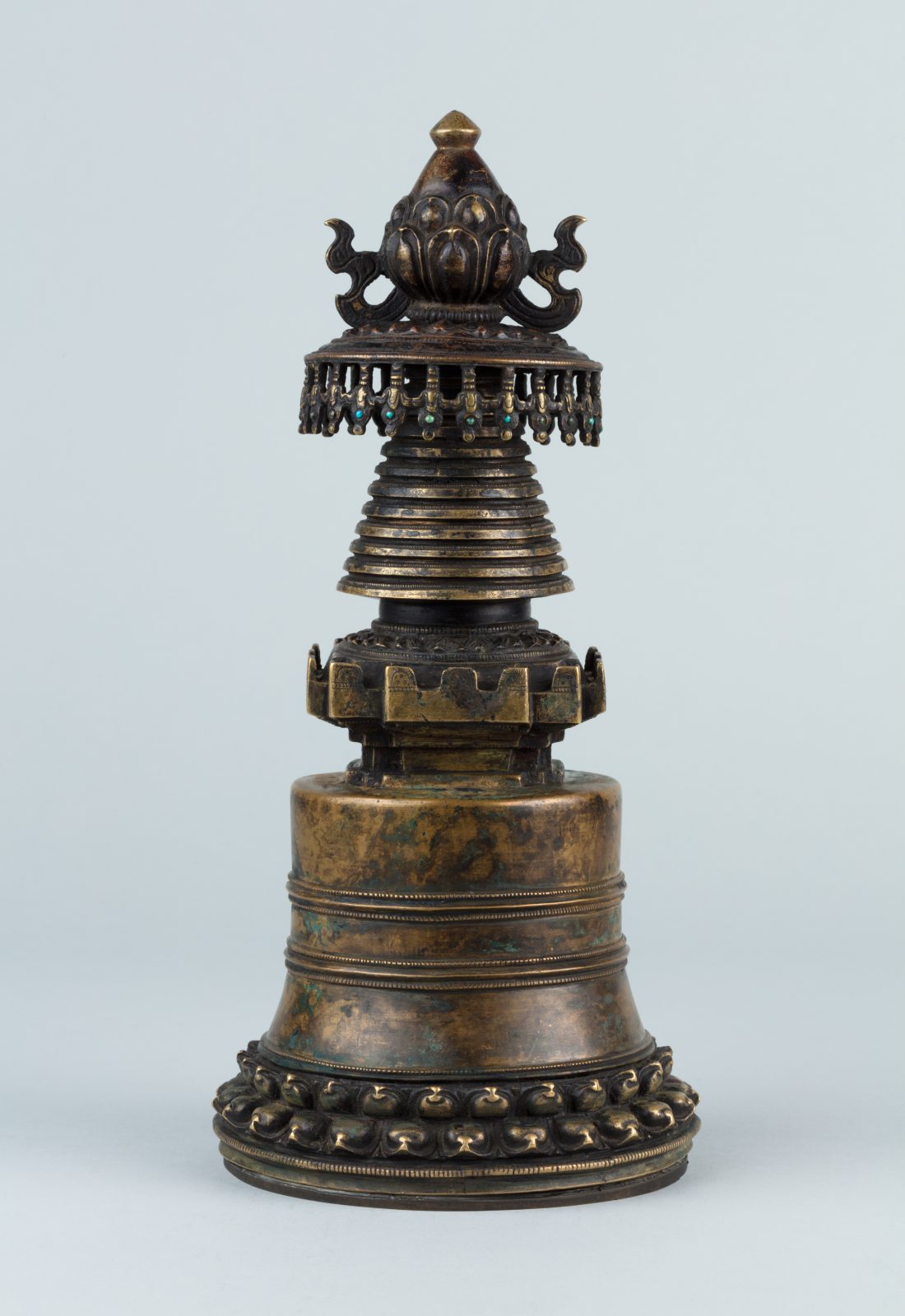

This week’s meditation session is led by Tracy Cochran and the theme is Transforming Afflictive Emotions. The guided meditation begins at 17:26.

Stupa; Tibet; 13th-14th century; Copper alloy; Rubin Museum of Himalayan Art; C2003.21.1
The stupa is a symbol found across all Buddhist traditions. It originated in India as a mound made to hold sacred remains, like those of the historical Buddha Shakyamuni. This is not limited to the mortal remains of a holy person but may also include objects associated with that person, such as clothes, as well as sacred texts, articles of worship, and figures made of clay and the ashes of the deceased (tsatsa). While a statue or painting of a buddha represents the divine body of an enlightened being and a book symbolizes divine speech, a stupa represents the mind of supreme spiritual awakening and is thus a symbol of buddhahood.

Tracy Cochran has taught meditation and spiritual practice for many years. She is a speaker and author whose most recent book, Presence: The Art of Being At Home in Yourself, was published by Shambhala Publications in 2024. Tracy is the founder and leading teacher of the Hudson River Sangha and has taught mindfulness and mindful writing at New York Insight, the Rubin Museum of Himalayan Art, and many other venues. In addition to serving as the editorial director of the acclaimed spiritual quarterly Parabola, her writings have appeared in The New York Times, New York Magazine, Psychology Today, The Best Spiritual Writing series, Parabola, and many other publications and anthologies. For more about Tracy, please visit tracycochran.org and parabola.org.
Get the latest news and stories from the Rubin, plus occasional information on how to support our work.